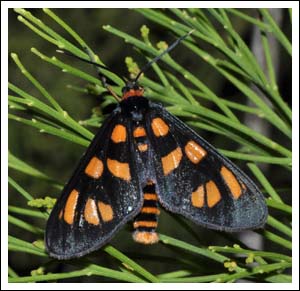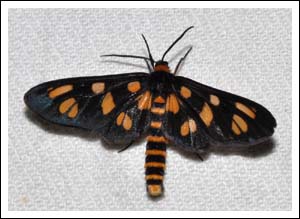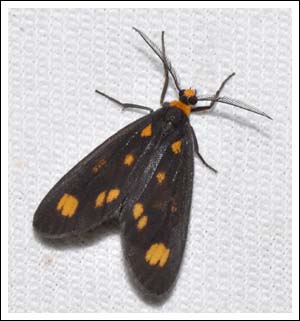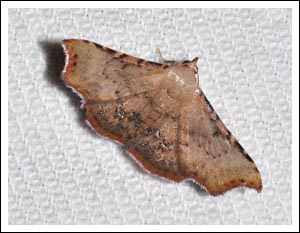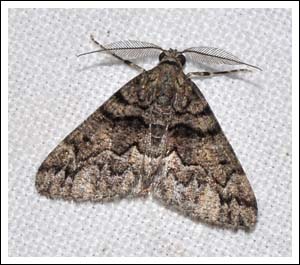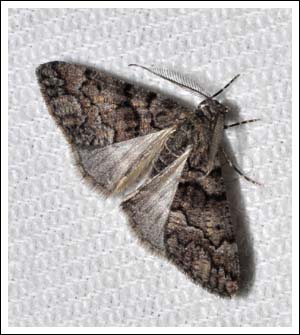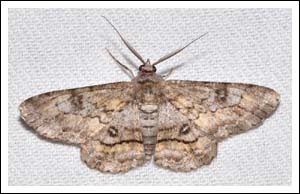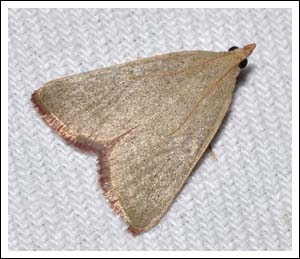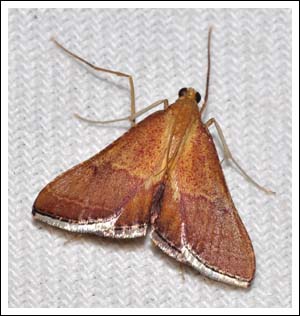A late summer outing found the bush very dry with the smaller shrubs struggling to survive. With the rig set up prior to darkness, the first job was to look through the foliage of the big Exocarpos cupressiformis, or wild cherry in the hope of finding something interesting. On this occasion the jackpot was struck with several males of sp(1) (MOV) in the Amata nigriceps group (Ctenuchinae) discovered perched in the foliage. Later, one came in to the light.
The lichen moth most commonly encountered is Asura lydia, this is the Spotted Lichen Moth, Asura cervicalis. (Lithosiinae)
A new record for the location was appropriately a dry country moth, the Golden Crest, Prorocopis euxantha, (Erebidae) Golden refers to the hind wings that were unfortunately not displayed. The crest which can be raised is visible lowered in the lateral view.
A smaller Noctuid, the Common Hookwing, Corgatha dipyra, (Acontiinae)
Another first was the Jagged Bark Moth, Lipogya exprimataria. (Boarmiinae)
Also in the Boarmiinae, Cleora sp(2) (MOV)
One of the many Dichromodes, D. obtusata, (Oenochrominae)
Two moths from the Pyralidae, Ocrasa acerasta,
And Endotricha pyrosalis.
And to finish, a micro moth. This tiny moth measured approximately three millimetres in length. Its very small size can be gauged in the image by comparing it with the weave of the sheet.
Click to enlarge.
References and further reading,
Moths of Victoria Volumes 2, 4, 7, and 8.

